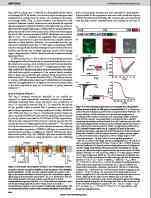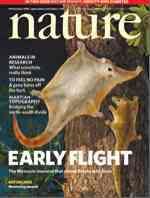Guest Post by Imran Nasrullah

 Recently, the New York Times reported on the case of a 10-year old boy from Lahore who could perform remarkable feats – like walking on burning coals and passing knife blades through his arm – without exhibiting any sign of pain. According to the NYT:
Recently, the New York Times reported on the case of a 10-year old boy from Lahore who could perform remarkable feats – like walking on burning coals and passing knife blades through his arm – without exhibiting any sign of pain. According to the NYT:
Geneticists following up the case of a 10-year old Pakistani boy who could walk on coals without discomfort have discovered a gene that is central to the perception of pain. The boy lived in Lahore, Pakistan, and was well known to the city’s medical authorities because he would come to the clinic asking to be patched up after his street theater. In these exhibitions, he would pass knives through his arms and walk on burning coals without feeling pain.
A research team led by C. Geoffrey Woods, a physician at the Cambridge Institute for Medical Research in Cambridge, England, reports in the journal Nature that team members have identified a genetic defect in some of the boy’s relatives who are also unable to feel pain. The defect inactivates a gene that is critical to the body’s perception of pain. The gene is obviously an attractive new target for drug developers seeking to eliminate pain.
Researchers following up met other members of this family (the Quereshis) in Pakistan comprising individuals with this same unique ability: “None knew what pain felt like, although the older individuals realized what actions should elicit pain,” say researchers.
It turns out members of this clan have a key mutation in the gene SCN9A (located on chromosome 2-specifically, chromosome 2q24.3) that totally blocks the perception of pain. SCN9A encodes for a sodium channel receptor that regulates. It has been known that a different mutation in the same gene produces the opposite feeling- an intense searing sensation responsive to mild warmth- known as Burning Man’s Syndrome. To be immune from pain, requires inheritance of a single copy of the mutation from both parents (homozygous recessive), a phenomenon more likely to occur in clan based societies where intermarriage among the clan is frequent.From a pharmacoeconomic perspective, this discovery is huge as pain management for back pain alone consumes 20% of US health costs and 1.5% of US GDP! Drug developers could start generating new medicines- agonist[s] specific for this subunit might act as a ‘total analgesic’ with no side effects – thereby, better managing pain.
Let’s hope that drug companies capitalizing on this discovery will make such medicines affordable to those in poor countries who live with pain without recourse.
Imran Nasrullah heads business development and IP liscensing at a pharmaceutical company in the United States.




















































Again, thanks to ATP, Adil you are absolutely right that we are enjoying with the deprived person if some one is tall its for our fun if someone cant spek smoothly its for our fun if someone has not good ascent its also for our fun every thing is not for show it will be the matter of life and death. thanks again ATP perhaps it was enough for us that NY placed a paki,s poor boy in magazine but its for us that how much we have lost our values. Were they not our ancestor who cared nation? And now we are enjoying over own people.May Allah help us to feel the pain of our brothers sisters and mothers.
I agree with Adil. There are so many ‘ways’ in which people make money in Pakistan; and children sometimes do such abusive behavior and noone ever objects it. Its part of our society, our culture. As far as the discovery of this gene is concerned, there is alot going on in the field of genetics and you’ll be surprised that what kind of genes have been discovered, e.g., a gene of God, of love etc. ;and it would take many decades of research and clinical trials before a clinician could give something to his patients that could do miracles.
What intrigues (and disturbs) me about this story also is that the poor boy made a living by using his ‘painlessness’… by purposefully hurting himself so that people could ‘enjoy’ his pain, or lack thereof. i.e., a freak show; and the ‘freak’ here is not the boy with the missing gene but those who woudl ‘enjoy’ such spectacles (and there are, of course, plenty of those. I beleive teh boy actually died, in that process (not because of the pain but by the constant mutilation he inflicted on himself). Beyond the science, there is a social science issue here of why we so sadistically ‘enjoy’ what is obviously a self-abusive behavior.
Yes..I read this in the journal itself not too long ago. And Bilal, don’t worry, pretty soon we’re going to have a group of people who will publish papers in Nature and Science on a regular basis…in about six years :-)
Imran,
I read this news when it appeared in NY Times and immediately wondered if this will be a call for Pakistanis to start creating their own investigative teams into such genetic research. This is not the only case where specific genes linked to populations groups from our part of the world are involved, and investigations can lead to not just a better understanding, but also to cures and therapies.
I am happy to see at least a few Pakistani institutions are listed in the original paper, but I wonder what their roles were in the scientific discovery. I hope there will be more such papers with Pakistani authors in them.